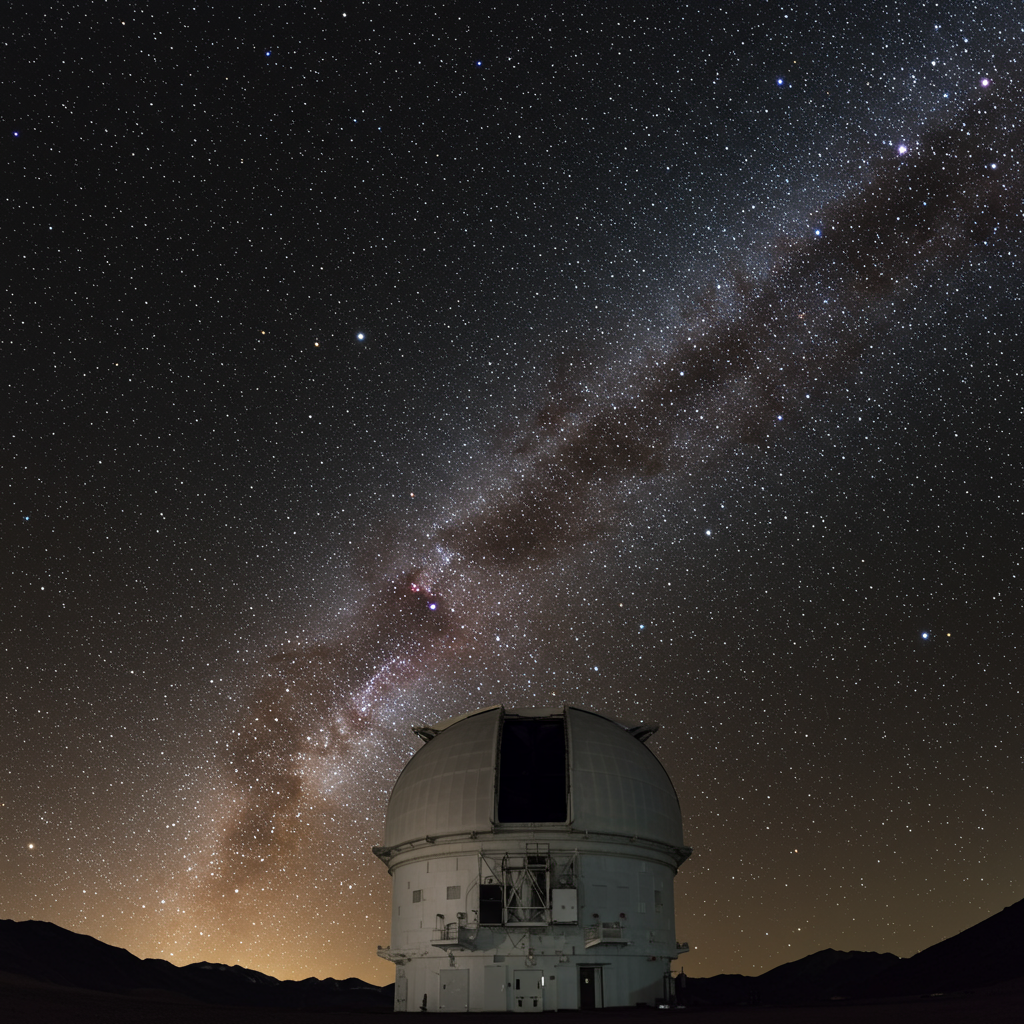The universe is revealing its secrets with unprecedented clarity, thanks to a groundbreaking new telescope in Chile. The Vera C. Rubin Observatory has just released its inaugural celestial image, offering a stunning glimpse into the cosmos and marking the dawn of a revolutionary astronomical survey.
Located high on Cerro Pachón in the Chilean Andes, a site specifically chosen for its exceptional altitude, dryness, and darkness, the Rubin Observatory is poised to transform our understanding of the universe’s most profound mysteries.
First Light: A Window to Cosmic Wonders
The initial images released showcase the observatory’s remarkable ability to peer into the deep, dark expanse of space. One captivating picture reveals the swirling, colorful gas and dust clouds within the Trifid and Lagoon nebulae – a dynamic star-forming region located approximately 9,000 light-years from Earth. Another highlights a vast cluster of galaxies within the Virgo cluster, demonstrating the telescope’s wide field of view and depth.
These initial snapshots are just a preview of the vast amounts of data the observatory will collect, promising an unparalleled view of the cosmos.
The Vera C. Rubin Observatory: A Technological Marvel
Home to the world’s most powerful digital camera, built by the US Department of Energy’s SLAC National Accelerator Laboratory, the Vera C. Rubin Observatory is engineered for precision and scale. Its unique three-mirror design (an 8.4-meter primary, 3.4-meter secondary, and 4.8-meter tertiary mirror) allows it to capture maximum light from distant objects and produce exceptionally sharp images. Maintaining the pristine condition of these massive mirrors is critical, as even minute imperfections could compromise image quality.
The observatory’s location demands meticulous care – strict darkness protocols are observed, even for personnel navigating the site at night, to ensure that no stray light interferes with the faint starlight being captured. This dedication to minimizing light pollution is essential for detecting dim, distant objects like ancient galaxies or supernovae explosions that occurred billions of years ago.
The heart of the facility is its colossal camera. Measuring 1.65 meters by 3 meters and weighing 2,800 kg, its 3,200 megapixels provide a resolution so high it could image a golf ball on the Moon. Displaying a single image from this camera would require 400 Ultra HD TV screens. This immense camera, coupled with the observatory’s ability to rapidly reposition, will capture images every 40 seconds, for 8-12 hours each night.
Launching the Legacy Survey of Space and Time (LSST)
The release of the first image signifies the beginning of the observatory’s ambitious 10-year mission: the Legacy Survey of Space and Time (LSST). This continuous filming of the southern night sky represents a once-in-a-generation moment for astronomy, providing a dataset unlike any before.
The sheer volume of data generated will be staggering, peaking at around 10 million transient alerts per night. Analyzing this torrent of information will be the task of hundreds of scientists worldwide. The United Kingdom is a key international partner, hosting data centers crucial for processing the extremely detailed snapshots the telescope will capture.
Unlocking Cosmic Mysteries
The LSST has four core scientific pillars designed to push the boundaries of astronomical knowledge:
- Mapping Changes in the Sky: By repeatedly surveying the same areas, Rubin will excel at detecting changes and transient objects – phenomena that vary over time, such as exploding stars (supernovae) or objects moving within our solar system. This capability to detect sudden cosmic events is described as a unique strength, potentially revealing previously unimagined phenomena.
- Mapping the Solar System: The survey is expected to dramatically increase the number of known objects in our solar system, potentially tenfold. Crucially, it will be powerful enough to detect near-Earth asteroids that could pose a threat, providing vital early warnings.
- Exploring the Milky Way: The observatory will provide the largest dataset ever for studying our home galaxy. It’s expected to see back much further than current instruments, reaching up to 1.2 million light-years into the Milky Way’s structure, compared to the current limit of around 163,000 light-years. This will allow astronomers to map the stellar halo – the “graveyard” of stars absorbed by the galaxy over time – and find faint satellite galaxies previously hidden from view.
- Understanding Dark Matter and Universe Formation: By capturing images of faint galaxies and distant supernovae from billions of years ago, the LSST will provide crucial insights into the history and fundamental composition of the universe, including the elusive nature of dark matter, which makes up the majority of its mass.
Perhaps one of the most tantalizing goals is the potential to finally solve the mystery of the hypothetical Planet Nine. Scientists believe the Rubin telescope is powerful enough to confirm or refute its existence, potentially finding it within its first year of operation, even if it lies as far as 700 times the Earth-Sun distance – far beyond the reach of previous ground telescopes.
A New Era of Discovery
The debut of the Vera C. Rubin Observatory comes at an exciting time in astronomy, following the revolutionary insights provided by instruments like the James Webb Space Telescope (JWST), which is also pushing the boundaries of our understanding of the early universe and distant objects. While JWST excels at detailed infrared observations of specific targets, Rubin’s strength lies in its vast, deep, and rapid survey capabilities across optical and near-infrared wavelengths.
This project represents the culmination of decades of work by a generation of astronomers and engineers. As Professor Catherine Heymans, Astronomer Royal for Scotland, notes, it’s a moment many have worked towards for 25 years or more. The first image release is not just a scientific achievement but a testament to global collaboration and relentless dedication.
The data from the LSST is expected to fuel astronomical research for decades, providing unprecedented views of the cosmos and potentially leading to discoveries we haven’t even begun to imagine. The universe is ready to share its stories, and the Vera C. Rubin Observatory is poised to listen.


